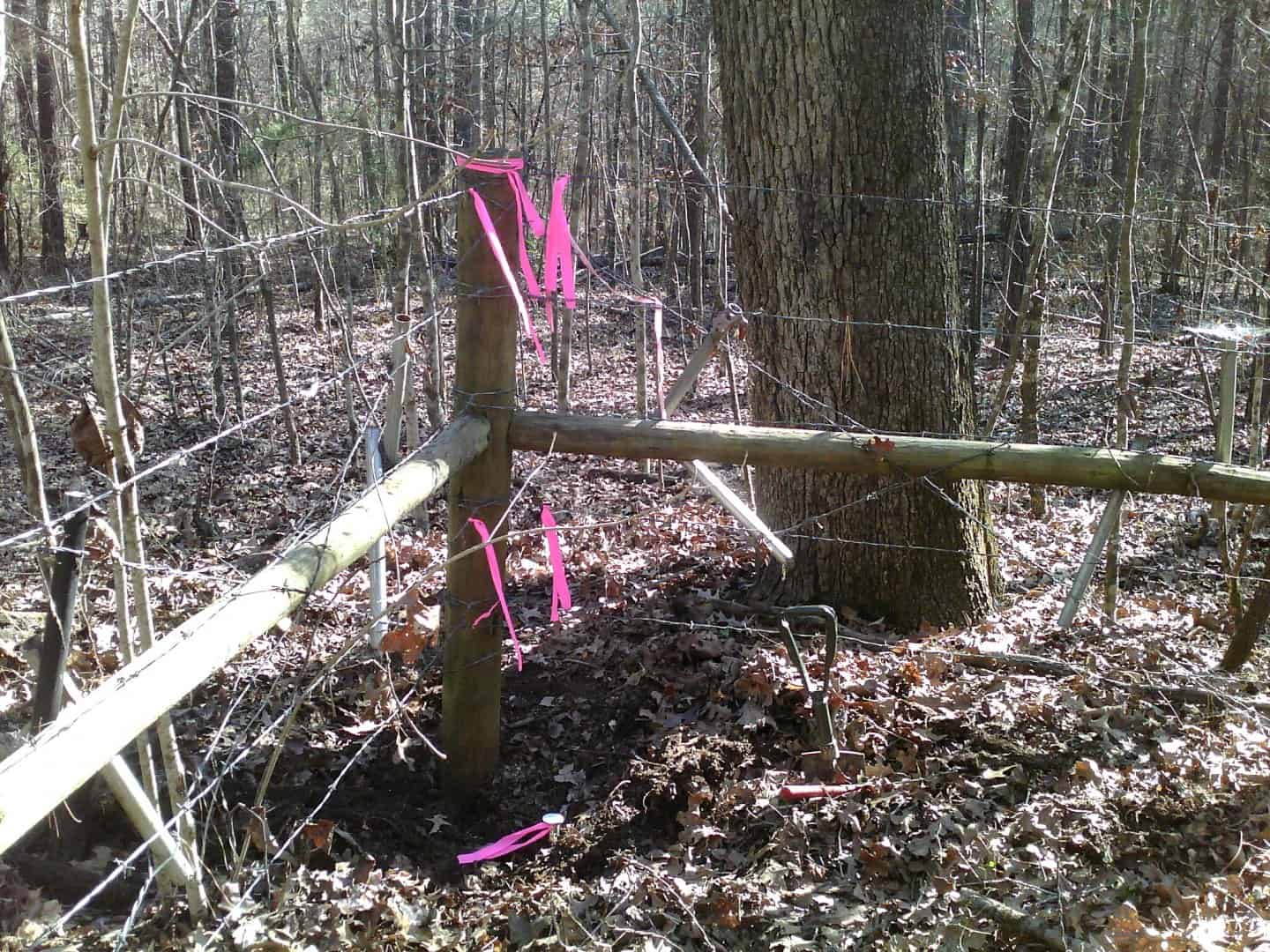I have a deed from 1906 that calls for an 18" Post Oak for Pointer. This isn't the current deed but I abstracted back to get a better feel for the boundary construction. I noticed a 24" Post Oak that seemed to have lived a rough life about 5' South of where I set my corner. I tied the tree as it seemed significant, even though I wasn't aware of the pointer call at the time. I assume (which is dangerous) that a pointer is very near to a corner, close enough not to bother with direction and distance, but this is only an assumption. Anyone familiar with the significance of the term "pointer"?
Thanks.
Is it "on line" in one direction, into or out of the "corner?"
Just guessing
I've never heard of them but Kent wrote of things called "pointer stones" a while back: https://surveyorconnect.com/community/threads/the-afternoons-field-work.286485/#post-286485 .
Must be a Texas thing.
Does the tree have a blaze, to "point" you to the right spot?
Nothing like a good Witness Tree.
I have one from 1840 or thereabouts.
N
Could be the case. I've got it figured that the tree is S 22å¡ W, 5.4 feet from the corner (based on more recent deed calls). From this corner, the line runs North and West. It's an inner ell corner for my tract and an outer ell corner for the adjoining tract. It was also an inner ell corner for the tract described in the 1906 deed. That being the case it's not on line (the way I have it figured).
It's an old tree with several scars. Had I known at the time that it was a "pointer" I'd have considered it more. It's also near an old fence being in proximity to the corner. There is some old wire in it, but only a couple of inches deep, like it was tacked on to the tree out of convenience. Of course seeing that is has only grown 6 inches in diameter in 111 years (if it's the same tree), could put that wire being there much longer than I realized...
I have taken core samples of trees, to see if their date matches the diameter. Bought a boring tool.
I have done a few boundaries in Virginia that had call outs for "pointer" trees. Doing some research I found that they are in fact very old way of showing direction. The Native Americans would bend and tie saplings in the shape of a bent arm showing direction to water sources and other important places. Early land surveyors adopted this tactic for large tracts of land and I have found that some properties have pointers all the way down a property line. Or sometimes bent to point at a significant corner.
Sent from my XT1254 using Tapatalk

Sent from my XT1254 using Tapatalk
There are quite a few in the Blue Ridge mountains in Northern VA. I have found two significant to property line still living that were quite large.
Sent from my XT1254 using Tapatalk
This tree had no bends like that. Being that the deed called it to be 18", unless that corner goes back a considerable length of time, I don't think this meaning of "pointer" was the surveyor's intended meaning. It would have had to be done while the tree was still a sapling.
This is what it looks like today. (It does lean to the North, but no sharp bends.) :
I am not familiar with a post Oak other than it is in the family of white Oak. I would think that an 18" call out from over 100 years ago would be much larger than 24" or completely gone. Hard to tell from the picture but it seems there is a very noticable depression where the fence post and Iron rod and cap are. Possibly old stump hole, I would dig around to try and find some evidence you may be looking for something that is gone. I have used stump holes and old pine hearts in the past to ascertain long gone deed corners.
Sent from my XT1254 using Tapatalk
There is a hole about a foot West of the iron rod I set. Pretty sure it's the old fence corner before the new one was built. I did dig it out quite a bit. With no more location other than "pointer" it's hard to no what I'd be digging for if it were another post oak. I'm not convinced that this is it, however, there is a post oak I know for sure is a witness tree that is now dead and laying on its side on the other side of the property. It was not given a size, but was called to have an "X on two sides". In 1962 a surveyor identified it as a 36" Post Oak. The remaining trunk has deteriorated a bit (too much to still see the X, but I don't think it's lost much of its diameter). It's still about 36". Our climate is pretty humid, so I don't think that it could have been dead for very many years.
I definitely need an increment borer. Too much left to guessing. Of course, I'll also need to learn how to use it...
The tree pictured definitely is not what I know of as a pointer, both that I have found where very noticable no doubt that's what they where.
Sent from my XT1254 using Tapatalk




